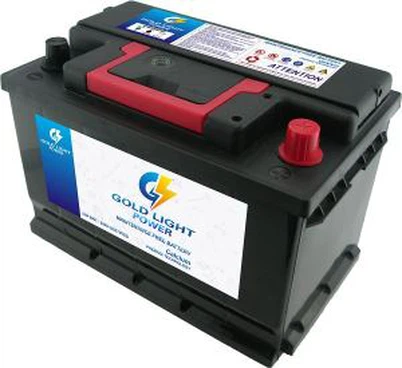How does the internal resistance affect the performance of an AGM battery?
Leave a message
As a supplier of AGM (Absorbent Glass Mat) batteries, I've witnessed firsthand the crucial role that internal resistance plays in the performance of these power storage units. In this blog, I'll delve into how internal resistance affects the performance of an AGM battery and why it's essential for users and potential buyers to understand this concept.


Understanding Internal Resistance in AGM Batteries
Internal resistance is an inherent characteristic of any battery, including AGM batteries. It represents the opposition to the flow of electric current within the battery itself. Several factors contribute to the internal resistance of an AGM battery, such as the materials used in the electrodes, the electrolyte, and the physical design of the battery.
The electrodes in an AGM battery are typically made of lead and lead dioxide. The resistance of these materials, along with the resistance of the electrolyte (usually sulfuric acid absorbed in the glass mat), contributes to the overall internal resistance. Additionally, the physical structure of the battery, such as the thickness of the electrodes and the spacing between them, can also affect the internal resistance.
Impact on Charging Performance
One of the primary ways internal resistance affects the performance of an AGM battery is during the charging process. When a battery is being charged, an external power source applies a voltage to the battery terminals. The internal resistance of the battery causes a voltage drop within the battery, which means that not all of the applied voltage is available to drive the chemical reactions that store energy in the battery.
As a result, a higher internal resistance leads to increased heat generation during charging. This heat can be detrimental to the battery's lifespan and performance. Excessive heat can cause the electrolyte to evaporate, leading to a loss of capacity and potentially damaging the battery's internal components. Moreover, the increased voltage drop due to internal resistance means that the battery may take longer to charge fully, reducing the efficiency of the charging process.
For example, if you're using a charger with a fixed voltage output to charge an AGM battery with high internal resistance, the battery may not reach its full charge capacity. The charger may stop charging before the battery is fully charged because the voltage at the battery terminals has reached the charger's cut-off voltage due to the voltage drop across the internal resistance.
Influence on Discharging Performance
Internal resistance also has a significant impact on the discharging performance of an AGM battery. When a battery is supplying power to a load, the internal resistance causes a voltage drop between the battery's open-circuit voltage (the voltage when no current is flowing) and the terminal voltage (the voltage available at the battery terminals when current is flowing).
This voltage drop means that the actual voltage available to the load is lower than the battery's open-circuit voltage. As the internal resistance increases, the voltage drop becomes more significant, especially at high discharge currents. This can lead to a situation where the battery appears to have less capacity than it actually does because the voltage available to the load drops below the minimum operating voltage of the device.
For instance, if you're using an AGM battery to power a high-power device such as a motor or an inverter, a high internal resistance can cause the battery's terminal voltage to drop rapidly under load. This can result in the device not operating properly or even shutting down prematurely.
Effect on Battery Capacity and Lifespan
The internal resistance of an AGM battery can also affect its overall capacity and lifespan. Over time, as a battery ages, its internal resistance tends to increase. This increase in internal resistance can lead to a decrease in the battery's capacity because the voltage drop across the internal resistance reduces the amount of energy that can be effectively stored and delivered by the battery.
Moreover, the increased heat generation due to high internal resistance can accelerate the aging process of the battery. The heat can cause the electrodes to degrade more quickly, leading to a loss of active material and a further increase in internal resistance. This vicious cycle can ultimately lead to a significant reduction in the battery's lifespan.
Importance of Low Internal Resistance
Given the negative impacts of high internal resistance on the performance and lifespan of an AGM battery, it's clear that low internal resistance is desirable. Batteries with low internal resistance can charge more efficiently, deliver more power to the load, and have a longer lifespan.
As a supplier, we take great care in selecting the materials and manufacturing processes to ensure that our AGM batteries have low internal resistance. For example, we use high-quality lead alloys for the electrodes and optimize the design of the battery to minimize the resistance of the electrolyte path.
Our AGM Battery Products
We offer a range of AGM battery products with excellent performance and low internal resistance. Two of our popular products are the 2V600AH AGM Rechargeable Power Battery Valve Regulated Lead Aicd Battery for Long Life Battery and the 2V800AH AGM, Gel Rechargeable Battery Deep Cycle Solar Power Battery.
These batteries are designed for various applications, including solar power systems, backup power supplies, and industrial equipment. They feature a valve-regulated design, which means that they are maintenance-free and can be installed in any orientation. The low internal resistance of these batteries ensures efficient charging and discharging, as well as a long service life.
Conclusion
In conclusion, the internal resistance of an AGM battery has a profound impact on its performance, capacity, and lifespan. High internal resistance can lead to increased heat generation, reduced charging and discharging efficiency, and a shorter battery life. As a supplier, we understand the importance of low internal resistance and strive to provide our customers with AGM batteries that offer optimal performance.
If you're in the market for high-quality AGM batteries, we invite you to contact us for more information and to discuss your specific requirements. Our team of experts is ready to assist you in selecting the right battery for your application.
References
- Linden, D., & Reddy, T. B. (2002). Handbook of Batteries. McGraw-Hill.
- Berndt, D. (2000). Lead-Acid Batteries: Science and Technology. Springer.





